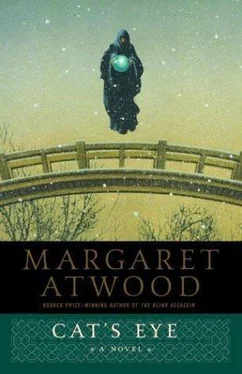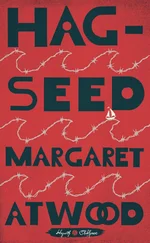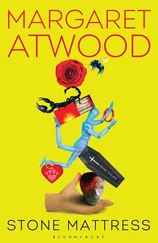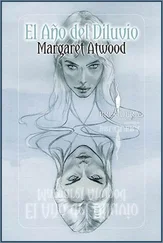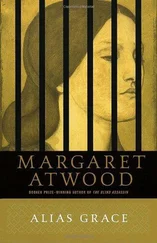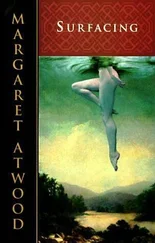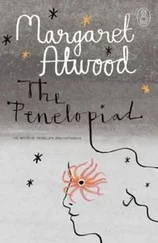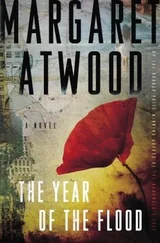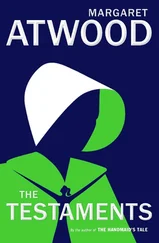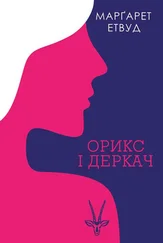Margaret Atwood - Cat's eye
Здесь есть возможность читать онлайн «Margaret Atwood - Cat's eye» весь текст электронной книги совершенно бесплатно (целиком полную версию без сокращений). В некоторых случаях можно слушать аудио, скачать через торрент в формате fb2 и присутствует краткое содержание. Жанр: Старинная литература, на английском языке. Описание произведения, (предисловие) а так же отзывы посетителей доступны на портале библиотеки ЛибКат.
- Название:Cat's eye
- Автор:
- Жанр:
- Год:неизвестен
- ISBN:нет данных
- Рейтинг книги:5 / 5. Голосов: 1
-
Избранное:Добавить в избранное
- Отзывы:
-
Ваша оценка:
- 100
- 1
- 2
- 3
- 4
- 5
Cat's eye: краткое содержание, описание и аннотация
Предлагаем к чтению аннотацию, описание, краткое содержание или предисловие (зависит от того, что написал сам автор книги «Cat's eye»). Если вы не нашли необходимую информацию о книге — напишите в комментариях, мы постараемся отыскать её.
Cat's eye — читать онлайн бесплатно полную книгу (весь текст) целиком
Ниже представлен текст книги, разбитый по страницам. Система сохранения места последней прочитанной страницы, позволяет с удобством читать онлайн бесплатно книгу «Cat's eye», без необходимости каждый раз заново искать на чём Вы остановились. Поставьте закладку, и сможете в любой момент перейти на страницу, на которой закончили чтение.
Интервал:
Закладка:
We color in Grace’s movie star coloring books, which show the movie stars in different outfits, doing different things: walking their dogs, going sailing in sailor suits, swirling around in evening dresses at parties. Grace’s favorite movie star is Esther Williams. I have no favorite movie star—I’ve never been to a movie—but I say mine is Veronica Lake, because I like the name. The Veronica Lake book is paper doll cutouts, with Veronica Lake in her bathing-suit and dozens of outfits you can stick onto her with tabs that fold around her neck. Grace won’t let us cut out these outfits, although we can put them on and take them off once she’s done it, but we’re allowed to work away at her coloring books as long as we stay inside the lines. She likes to get these books all colored in. She tells us what colors to use, on which parts. I know what my brother would do—green skin for Esther, with beetle antennae, and hairy legs for Veronica, eight of them—but I refrain from doing it. Anyway I like the clothes. We play school. Grace has a couple of chairs and a wooden table in her cellar, and a small blackboard and chalk. These are set up underneath the indoors clothesline where the Smeath underwear is hung up to dry when it rains or snows. The cellar isn’t a finished cellar: the floor is cement, the pillars holding up the house are brick, the water pipes and wires are showing, and the air smells of coal dust because the coal bin is right beside the blackboard.
Grace is always the teacher, Carol and I the students. We have to do spelling tests and sums in arithmetic; it’s like real school, but worse, because we never get to draw pictures. We can’t pretend to be bad, because Grace doesn’t like disorder.
Or we sit on the floor in Grace’s room with piles of old Eaton’s Catalogues. I’ve seen lots of Eaton’s Catalogues before: up north they’re hung in outhouses for use as toilet paper. Eaton’s Catalogues remind me of the stench of such outhouses, the buzzing of the flies down the hole underneath, the box of lime and the wooden paddle for dumping the lime down, onto the piles of old and recent droppings, of all shapes and colors of brown. But here we treat these catalogues with reverence. We cut the small colored figures out of them and paste them into scrapbooks. Then we cut out other things—cookware, furniture—and paste them around the figures. The figures themselves are always women. We call them
“my lady.” “My lady’s going to have this refrigerator,” we say. “My lady’s getting this rug.” “This is my lady’s umbrella.”
Grace and Carol look at each other’s scrapbook pages and say, “Oh, yours is so good. Mine’s no good. Mine’s awful. ” They say this every time we play the scrapbook game. Their voices are wheedling and false; I can tell they don’t mean it, each one thinks her own lady on her own page is good. But it’s the thing you have to say, so I begin to say it too.
I find this game tiring—it’s the weight, the accumulation of all these objects, these possessions that would have to be taken care of, packed, stuffed into cars, unpacked. I know a lot about moving house. But Carol and Grace have never moved anywhere. Their ladies live in a single house each and have always lived there. They can add more and more, stuff the pages of their scrapbooks with dining room suites, beds, stacks of towels, one set of dishes after another, and think nothing of it. I begin to want things I’ve never wanted before: braids, a dressing gown, a purse of my own. Something is unfolding, being revealed to me. I see that there’s a whole world of girls and their doings that has been unknown to me, and that I can be part of it without making any effort at all. I don’t have to keep up with anyone, run as fast, aim as well, make loud explosive noises, decode messages, die on cue. I don’t have to think about whether I’ve done these things well, as well as a boy. All I have to do is sit on the floor and cut frying pans out of the Eaton’s Catalogue with embroidery scissors, and say I’ve done it badly. Partly this is a relief.
Chapter 11
F or Christmas, Carol gives me some Friendship’s Garden bath salts and Grace gives me a coloring book of Virginia Mayo. I open their presents before anyone else’s.
I also get a photo album, to go with my camera. The pages and covers are black, tied together with something that looks like a big black shoelace; there’s a package of black triangles with glue on them to stick the photos in with. So far I have taken only one roll of film with my camera. I think about what each picture will look like as I press the button. I don’t want to waste any. When the pictures come back from being developed, the negatives come too. I hold them up to the light: everything that’s white in the real picture is black in the negative. Snow for instance is black, and people’s eyeballs and teeth. I stick my photos into the album with the black triangles. Some of the pictures are of my brother, making threatening gestures with snowballs. Some are of Carol, some of Grace. There’s only that one picture of me, standing in front of the motel door with 9 on it, long ago, a month ago. Already that child seems much younger, poorer, farther away, a shrunken, ignorant version of myself. Another thing I get for Christmas is a red plastic purse, oval in shape, with a gold-colored clasp and a handle at the top end. It’s soft and pliable inside the house, but hardens outside in the cold, so that things rattle in it. I keep my allowance in it, five cents a week.
By this time we have a living room floor, hardwood, waxed by my mother down on her knees, polished with a long-handled weighted brush that she pushes back and forth, making a sound like waves. The living room has been painted, the fixtures installed, the baseboards added on. There are even curtains; drapes, they’re called. The public, visible parts of the house have been finished first. Our bedrooms remain in a rawer state. The windows there do not yet have drapes. Lying in bed at night, I can look out of my window at the snow falling, illuminated by the light from my brother’s bedroom window beside mine.
It’s the darkest time of the year. Even in the daytime it seems dark; and at night, when the lights are on, this darkness pervades everything, like a fog. Outside there are only a few streetlights, and they’re far apart and not very bright. The lamps in people’s houses cast a yellowish light, not cold and greenish but a buttery dim yellow with a tinge of brown. The colors of things in houses have darkness mixed into them: maroon, mushroom beige, a muted green, a dusty rose. These colors look a little dirty, like the squares in a paint box when you forget to rinse the brush.
We have a maroon chesterfield which has come out of storage, with an oriental-style maroon and purple rug in front of it. We have a tri-light floor lamp. The air in the evening lamplight is coagulated, like a custard thickening; heavier sediments of light collect in the corners of the living room. The drapes are kept closed at night, folds and folds of cloth drawn against the winter, hoarding the dim heavy light, keeping it in.
In this light I spread the evening paper out on the polished hardwood floor and rest on my knees and elbows, reading the comics. In the comics there are people with round holes for eyes, others who can hypnotize you instantly, others with secret identities, others who can stretch their faces into any shape at all. Around me is the scent of newsprint and floor wax, the bureau drawer smell of my itchy stockings mingled with that of grimy knees, the scratchy hot smell of wool plaid and the cat box aroma of cotton underpants. Behind me the radio plays square dance music from the Maritimes, Don Messer and His Islanders, in preparation for the six o’clock news. The radio is of dark varnished wood with a single green eye that moves along the dial as you turn the knob. Between the stations this eye makes eerie noises from outer space. Radio waves, says Stephen.
Читать дальшеИнтервал:
Закладка:
Похожие книги на «Cat's eye»
Представляем Вашему вниманию похожие книги на «Cat's eye» списком для выбора. Мы отобрали схожую по названию и смыслу литературу в надежде предоставить читателям больше вариантов отыскать новые, интересные, ещё непрочитанные произведения.
Обсуждение, отзывы о книге «Cat's eye» и просто собственные мнения читателей. Оставьте ваши комментарии, напишите, что Вы думаете о произведении, его смысле или главных героях. Укажите что конкретно понравилось, а что нет, и почему Вы так считаете.
